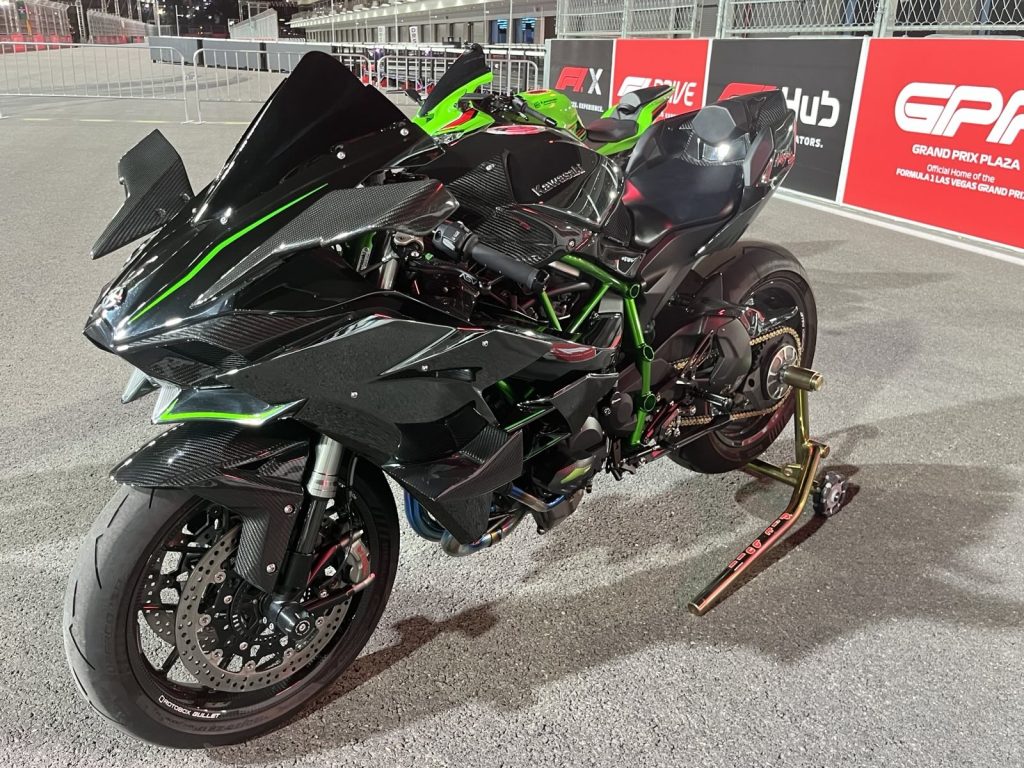Kawasaki Ninja H2: The Pinnacle of Supercharged Performance
By Ryan Gsellman

When Kawasaki unleashed the Ninja H2, it didn’t just enter the superbike conversation—it redefined it. The H2 is not merely another fast motorcycle; it’s an engineering marvel born from Kawasaki Heavy Industries’ aerospace and turbine divisions, delivering performance so outrageous that it borders on science fiction. With its supercharged heart, avant-garde styling, and aerospace-grade materials, the H2 stands as a symbol of what happens when a manufacturer removes all limits.
A Supercharged Heart Like No Other
At the core of the Ninja H2 is its 998cc, liquid-cooled, inline-four supercharged engine—a mechanical masterpiece that sets it apart from every naturally aspirated competitor. Developed in-house by Kawasaki, the centrifugal supercharger is capable of forcing immense volumes of air into the combustion chamber without the lag typically associated with turbocharged systems. The result? A breathtaking 228 horsepower (with Ram Air) and 104.9 lb-ft of torque, delivered with a linear, relentless rush that feels like a fighter jet taking off beneath you.
The powerplant’s construction is just as impressive as its output. Every element—from the precision-machined impeller spinning at up to 130,000 rpm to the intake ducts designed for optimal airflow—is crafted for maximum efficiency. The engine’s instant throttle response and howling induction note provide an experience unlike anything else on two wheels. Where most literbikes rely on revs for drama, the H2 provides thrust on demand, as if physics itself were optional.
Chassis, Handling, and Aerodynamics
All that power would be useless without a chassis capable of containing it. Kawasaki engineers developed a trellis frame made of high-tensile steel, balancing rigidity with controlled flex for high-speed stability. The single-sided swingarm not only enhances aesthetics but also allows for optimal chain alignment and maintenance accessibility—rare traits in a superbike of this caliber.
Suspension duties are handled by fully adjustable KYB AOS-II forks up front and a KYB rear shock, delivering sharp handling while keeping the bike planted through corners and under hard acceleration. Brembo Stylema monobloc calipers and dual 330mm discs provide immense stopping power, allowing riders to confidently harness the H2’s supercharged fury.
Kawasaki’s aerodynamic design philosophy plays an equally crucial role. The angular fairings, sculpted mirror mounts, and integrated winglets aren’t just for show—they help maintain downforce at high speeds and ensure front-end stability when the throttle is pinned. Every contour is purpose-driven, refined in the wind tunnel and inspired by the company’s aerospace expertise.
Electronics and Rider Aids
Raw power is only one half of the equation; controlling it is the other. The Ninja H2 features one of the most sophisticated electronic suites in motorcycling. Kawasaki’s proprietary IMU-based (Inertial Measurement Unit) electronics system provides real-time data across multiple axes, adjusting traction control, cornering ABS, launch control, and engine braking accordingly.
Modes such as Kawasaki Cornering Management Function (KCMF) and Kawasaki Traction Control (KTRC) ensure confidence whether carving canyon roads or testing limits on the track. The Kawasaki Quick Shifter (KQS) offers clutchless upshifts and downshifts, while cruise control and a TFT color display bring a level of refinement uncommon in hyperbikes.
For 2025, the latest iteration includes integrated smartphone connectivity via Kawasaki’s Rideology app, allowing riders to log ride data, adjust settings, and receive notifications—all from the cockpit of one of the most advanced motorcycles ever built.
Design and Aesthetic Brilliance
The Ninja H2’s design is nothing short of a visual statement. Draped in Kawasaki’s signature Mirror Coated Black Chrome, the paint itself is a feat of chemical engineering, adjusting its hue based on light and angle to create an otherworldly shimmer. Every surface, curve, and vent communicates aggression, speed, and sophistication.
Distinctive LED lighting, a sculpted seat cowl, and polished intake ducts make the H2 as much a work of art as it is a performance machine. Even at a standstill, it looks fast—its sharp edges and turbine-like silhouette exuding menace and prestige in equal measure.
Performance Perspective
The Kawasaki Ninja H2 is not for the faint-hearted. It’s an audacious expression of mechanical brilliance—a bike that laughs in the face of convention and physics alike. With its supercharged powertrain, meticulous engineering, and cutting-edge technology, it represents the pinnacle of what modern motorcycling can achieve. Whether parked under showroom lights or tearing down an open stretch of tarmac, the H2 remains one of the most awe-inspiring two-wheeled creations ever built.
